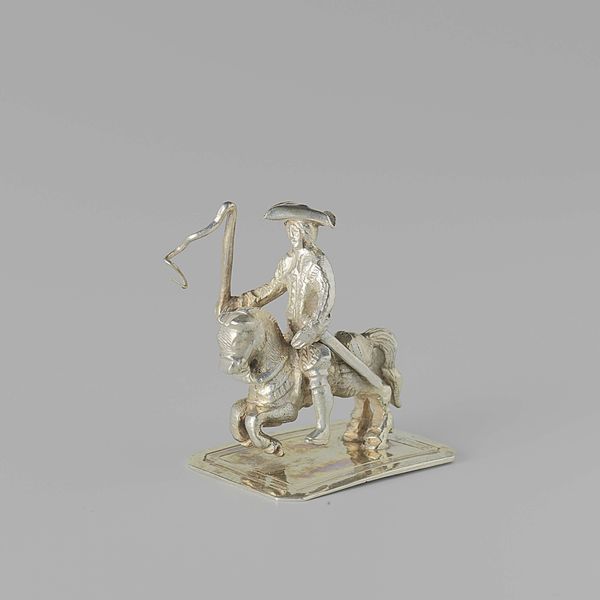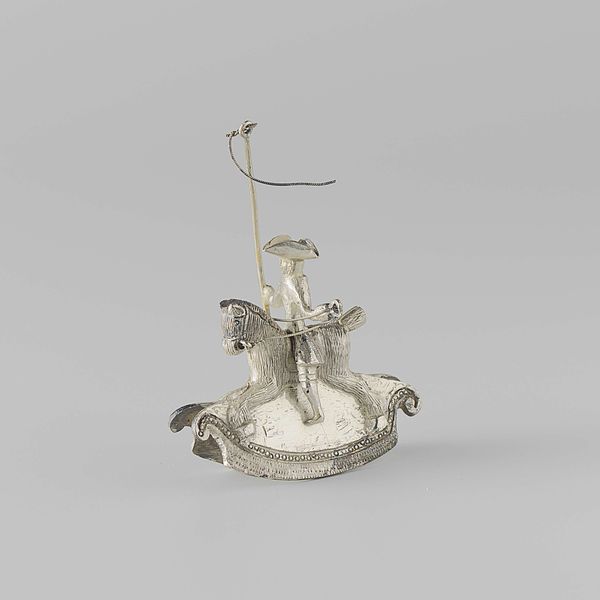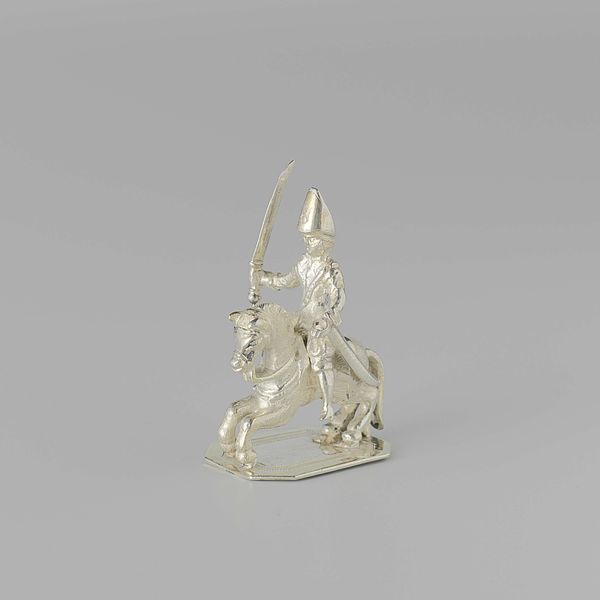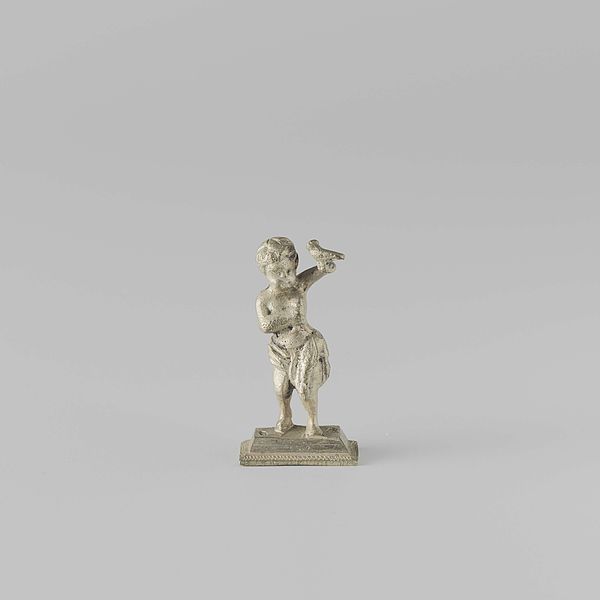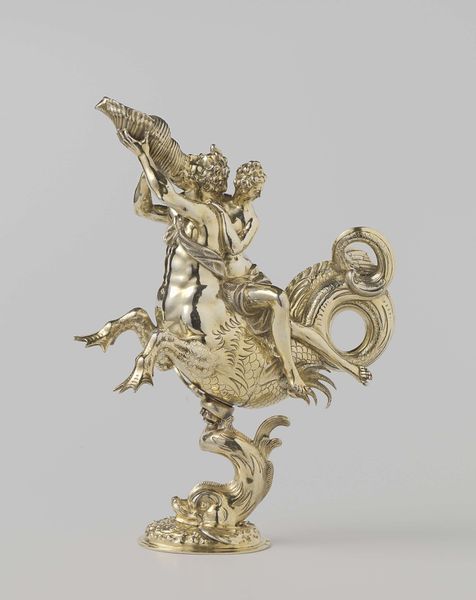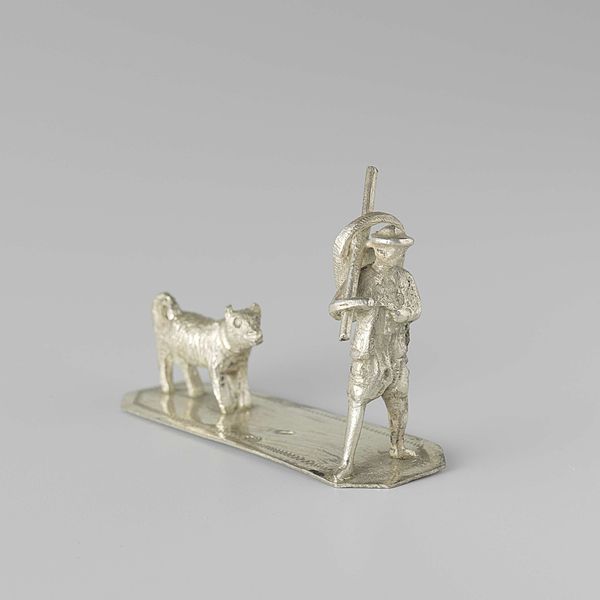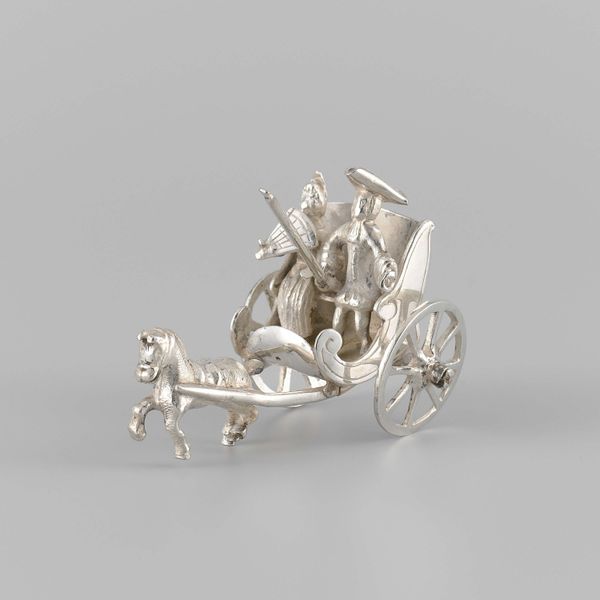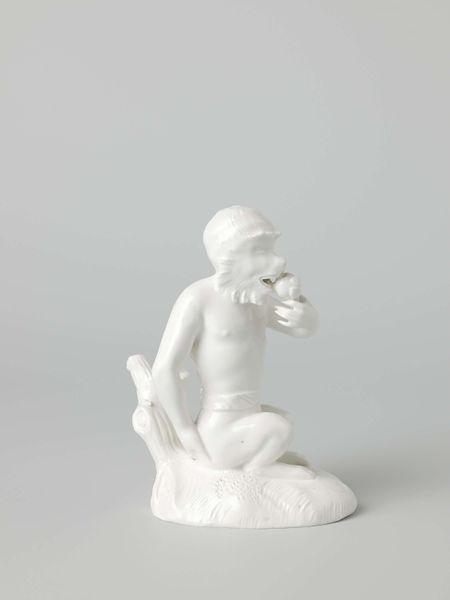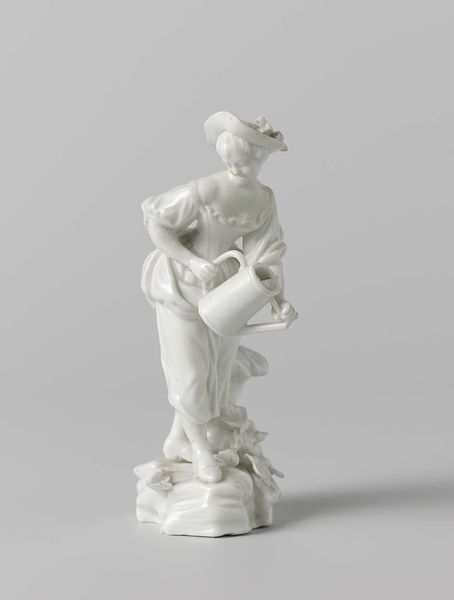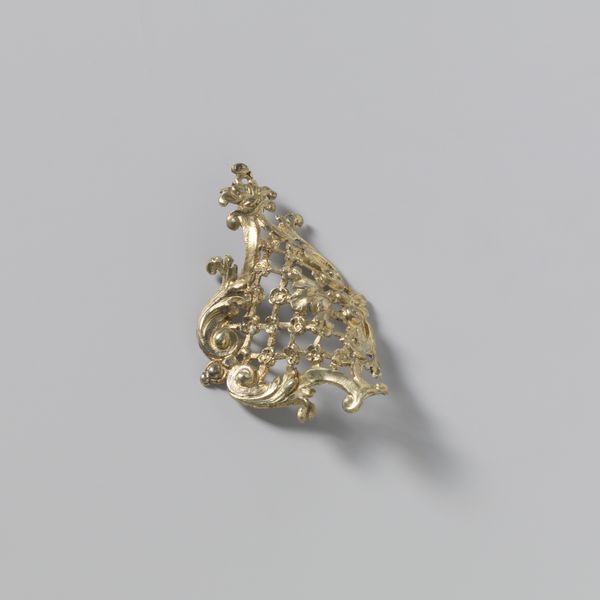
metal, sculpture
#
portrait
#
baroque
#
metal
#
figuration
#
sculpture
#
miniature
Dimensions: height 3.6 cm, width 2.7 cm, depth 2.1 cm, weight 15.64 gr
Copyright: Rijks Museum: Open Domain
Editor: So, this is "Trommelslager," made in 1751 by Arnoldus van Geffen. It's a tiny baroque sculpture, made out of metal. I'm struck by how diminutive and self-contained it is. It almost feels like a perfect, miniature world. What do you see in this piece? Curator: Intriguing observation. Immediately, the interplay of form and function asserts itself. The figure, poised mid-strike, becomes less about representation and more about the balance of shapes, lines and, most significantly, implied sound. Note how the artist manipulates the reflective surface of the metal, suggesting dynamism within a static object. Consider the concavity of the drum: does that surface act to amplify the qualities of reflection, of light? Editor: So it’s less about what he’s doing, and more about how the artist uses the metal? Is it trying to mimic an actual drumbeat in its shape? Curator: Precisely. The “doing,” is a mere vehicle. What truly matters is the exploration of form. And the potential reverberation of that form in both light and our perception of simulated sound. Consider the base, its geometric precision grounding the implied energy above it. Do you perceive a tension between the stasis of that base and the figure itself? Editor: Definitely! The base feels very controlled, while the drummer feels ready to burst with sound. That tension is really interesting. It's like two opposing forces held together in this tiny object. I’ll never look at miniatures the same way! Curator: Indeed. Through the meticulous orchestration of material, form, and implied motion, van Geffen elevates the mundane to the sublime. And we, as viewers, are invited to decode and appreciate this visual and, in effect, sonic narrative.
Comments
No comments
Be the first to comment and join the conversation on the ultimate creative platform.
